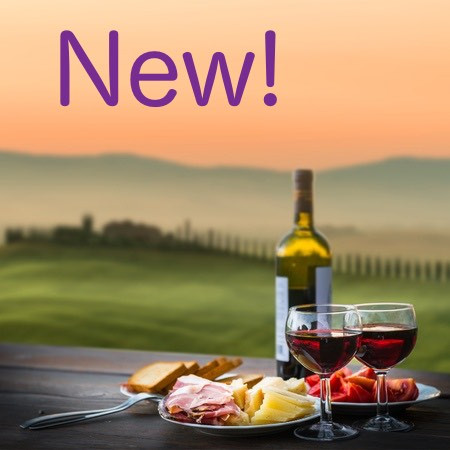Getting around Slovenia
Driving is one of the best ways to explore Slovenia, offering the freedom to discover its picturesque landscapes at your own pace. The country’s compact size and excellent road network make it easy to get around, with most destinations within a 2-3 hour drive from Ljubljana.
A vignette (road tax sticker) is mandatory for driving on motorways. These are available at petrol stations, border crossings, and online.
Slovenia has a modern, extensive motorway system with clear signposts and smooth surfaces. Roads are particularly scenic, especially in the mountainous regions.
Car hire is widely available in Slovenia, with international and local rental companies offering services at major hubs like Ljubljana Jože Pučnik Airport, train stations, and city centres.
Drivers must be at least 21 years old (age may vary by car category) and hold a valid driving licence for at least two years. Some companies charge a surcharge for drivers under 25.
Taxis in Slovenia are readily available in major cities and towns, especially near train and bus stations, airports, and busy city areas. Hotels and restaurants can also book taxis for you. Taxis are metered.
In addition, ride-hailing services (like Bolt) are available in cities like Ljubljana and Maribor, offering a modern alternative for booking rides.
Tipping is not mandatory, but rounding up the fare is appreciated.
Slovenia has an extensive network of marked cycling paths and trails, including urban bike lanes and countryside routes. Many accommodations cater specifically to cyclists, offering secure bike storage and repair tools.
Popular routes include:
• The Parenzana Trail: A picturesque route that connects Slovenia with Italy and Croatia, running along a former railway line.
• The Soča Valley: Perfect for nature lovers, with routes that wind through the valley’s lush greenery and alongside the turquoise Soča River.
• Lake Bled and Lake Bohinj: Scenic rides around Slovenia's iconic lakes with options for beginners and experienced riders.
Within Ljubljana, BicikeLJ is an affordable self-service bike-sharing system, perfect for tourists looking to explore the city at their own pace.
Slovenia has a well-organised network of inter-city coaches, providing an affordable and efficient way to travel between towns and cities. A popular route among visitors is between Ljubljana and Lake Bled.
The central hub for inter-city bus travel is Ljubljana's main bus station (Avtobusna postaja Ljubljana). Most towns and cities in Slovenia have their own bus stations, making it easy to start your journey from almost anywhere.
Key operators include Alpetour, Arriva Slovenia, Nomago, FlixBus, and GoOpti.
Seat belts are mandatory for all passengers in front and back seats, and dipped headlights must be used at all times. Using a mobile phone while driving is prohibited, although hands-free systems are permitted. The legal blood alcohol limit is 0.05%, with zero tolerance for novice drivers who have held a licence for less than three years.
Speed limits in Slovenia vary by road type: 110-130 km/h (68-81 mph) on motorways, 90 km/h (56 mph) on main roads, and 50 km/h (31 mph) in urban areas, with some zones reduced to 30 km/h (19 mph).
All vehicles are required to carry a warning triangle, reflective safety jacket, first aid kit, spare light bulbs, and a fire extinguisher (for vehicles registered in Slovenia). During winter, between 15 November and 15 March, vehicles must be equipped with winter tyres or carry snow chains.
The Automobile Association of Slovenia (AMZS) provides nationwide support and can be reached by dialling 1987 within Slovenia.
Foreign drivers in Slovenia must have a passport and a valid driving licence. Licences issued within the EU or EEA are accepted, while non-EU drivers may need an International Driving Permit (IDP), especially if their licence is not in the Latin alphabet.
In addition, vehicle registration documents, proof of insurance, and a rental car agreement are also required.
Urban travel in Slovenia primarily relies on bus networks, bicycles, or getting around by foot.
In Ljubljana, the Ljubljana Passenger Transport (LPP) company operates a comprehensive bus system connecting the city and its suburbs. Additionally, Ljubljana offers a unique service called Kavalir—small electric vehicles providing free transportation within the pedestrian zones of the city centre. These eco-friendly shuttles are ideal for navigating areas like the Old Town and are particularly appreciated by tourists and those with mobility challenges.
The national railway operator, Slovenske železnice (SŽ), manages various train services, including high-speed options like the InterCity Slovenija (ICS), which utilises modern tilting trains to link key cities such as Ljubljana and Maribor.
Popular domestic routes include Ljubljana to Maribor, Ljubljana to Koper on the Adriatic coast, and Bohinj Railway (Bohinjska proga). The latter traverses the Alpine Valley of Bohinj and the Soča River, featuring engineering marvels like the Bohinj Tunnel, Slovenia's longest rail tunnel, and the Solkan Bridge, the world's longest stone arch railway bridge.
For a unique experience, travellers can take the motorail (car train) service between Bohinjska Bistrica and Most na Soči, allowing them to transport their vehicles while enjoying the scenic journey through tunnels, galleries, and bridges.
Do you have any Feedback about this page?
© 2025 Columbus Travel Media Ltd. All rights reserved. No part of this site may be reproduced without our written permission, click here for information on Columbus Content Solutions.



 You know where
You know where